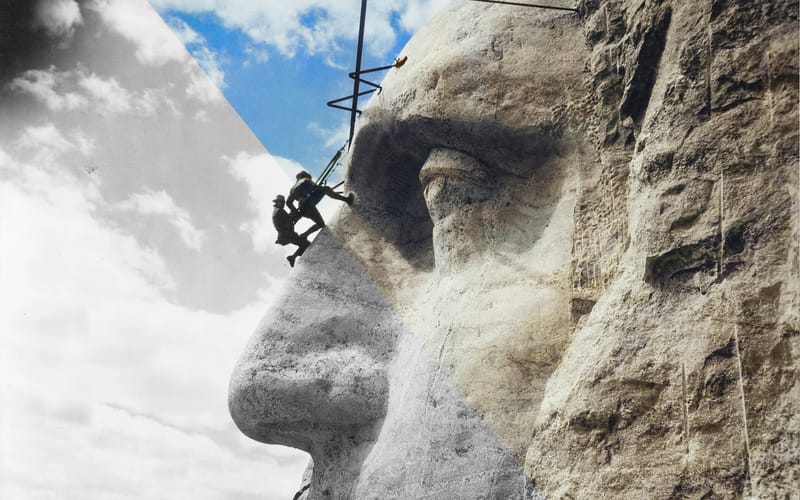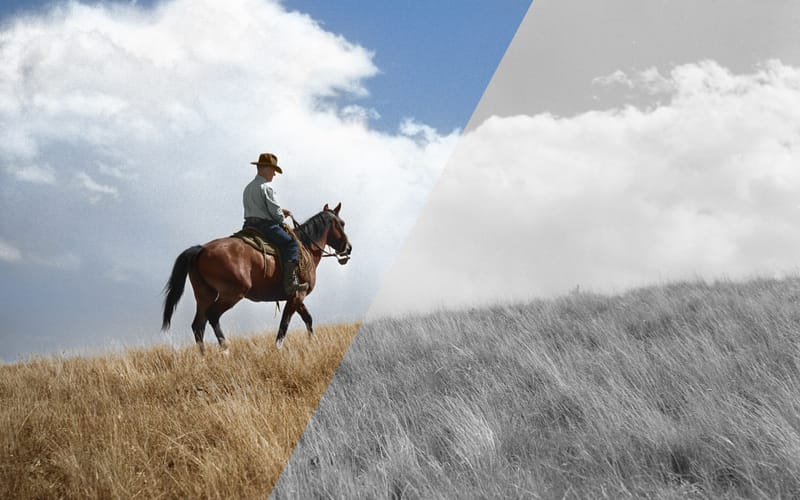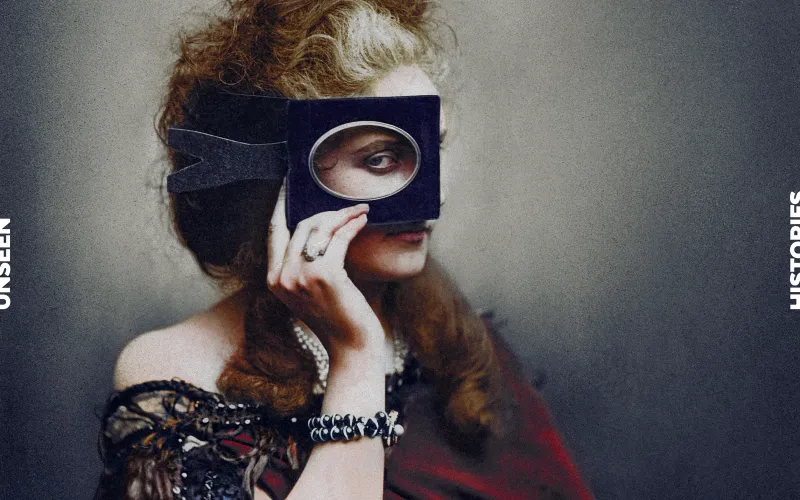Yebichai, the Beggar, 1904
Photograph by Edward S. Curtis, Navajo Nation, United States
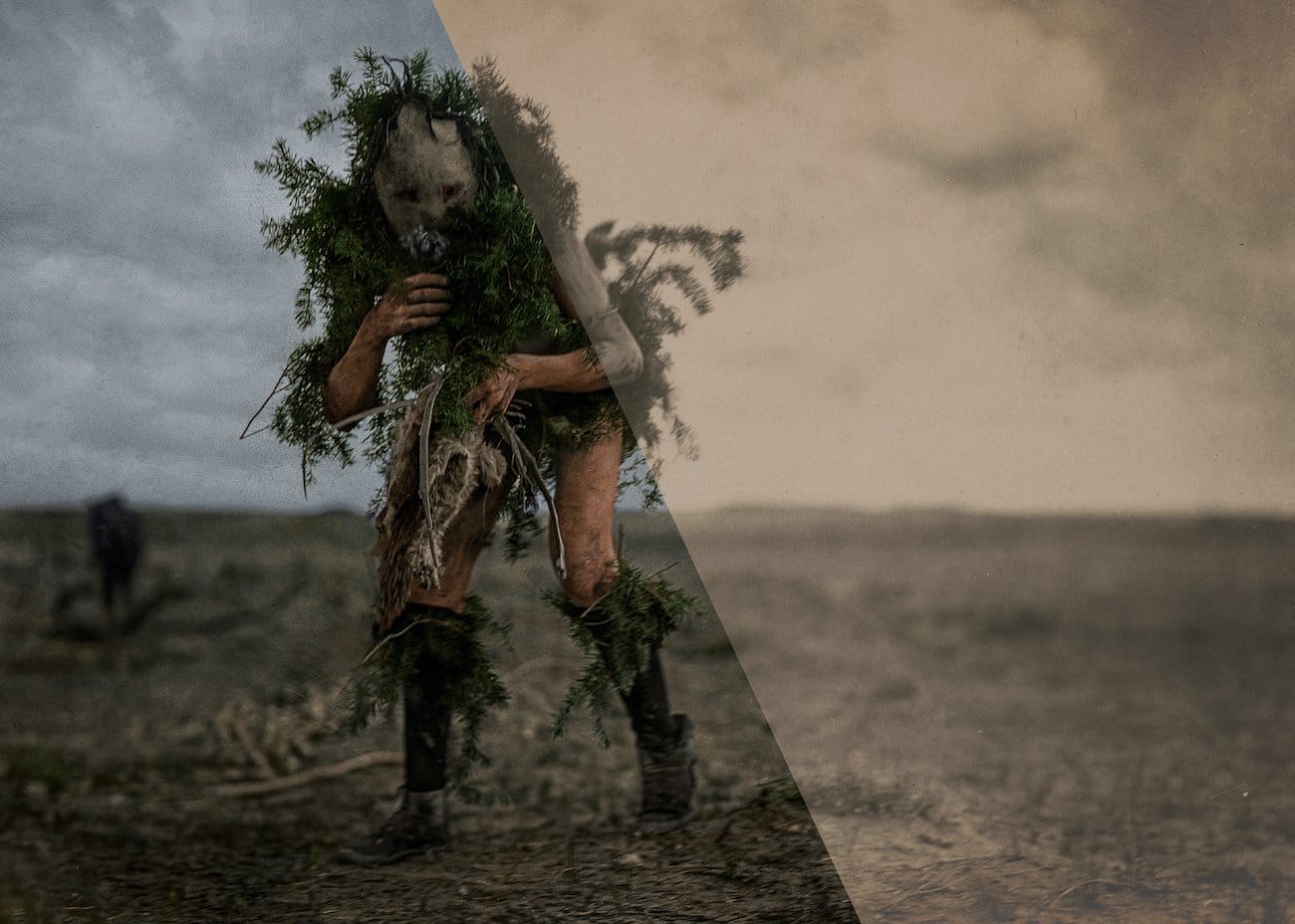
Snapshot is an ongoing series revealing the story behind a single picture from the archives.

"The actor has no special implement: he does not carry a rattle like other dancers; he may bear the bunch of spruce or the skin of a wild animal, usually a fox-skin, with which he plays his pranks."
Tó Neinilii is the rain god of the Navajo (Diné) people of Arizona and New Mexico, known for having fun and playing tricks. In the tribal dances, he is represented by a masked man who enacts the part of clown. In Diné myths, he is the fool who dances about in order to show that he is pleased with what is happening. Tó Neinilii was said to often argue with the Navajo god Nohoilpi. In times of drought or misfortune due to the weather, it was often said that Tó Neinilii had lost a bet with Nohoilpi.
A contemporaneous text from the same period called The Night Chant: A Navajo Ceremony (⇲ Wellcome Collection) compiled by Washington Matthews for the American Museum of Natural History (Volume VI) provides some additional context below. 𖨠
Water-Sprinkler is the literal translation of the name of Tó’nenili, the rain-god, – the Navaho Tlaloc. We speak of him in the singular although there are thought to be many gods of this name. It seems that the home of the most important rain-god is at Tse'gíhí, yet one is represented as dwelling at each place where there is a community of yéi. He is the lord of waters; but particularly of celestial waters, of precipitated waters. The ocean, rivers, and lakes seem more under the control of Tiéholtsodi. When Tó’nenili wishes to produce rain, he scatters his sacred waters to the four cardinal points and immediately the storm-clouds begin to gather. He is a water-carrier for the other gods.
His personator appears only on the last night of che ceremony in the dance of the naakhai’. He wears the mask and dress of the ordinary yébaka; but all the articles of his apparel are of inferior quality. "Why should he (the god proper) dress well, when he may get his clothes wet with water?” ask the priests. The actor has no special implement: he does not carry a rattle like other dancers; he may bear the bunch of spruce or the skin of a wild animal, usually a fox-skin, with which he plays his pranks.
In the myths, the god is represented as carrying a wicker water-bottle, or two water-bottles, one black and one blue: but the personator never carries such a bottle. The strings of the divine bottles were rainbows. His clownish actions at the dance are described elsewhere. We attempt to represent his peculiar cry thus: "Yuw yuw yuw yuw."
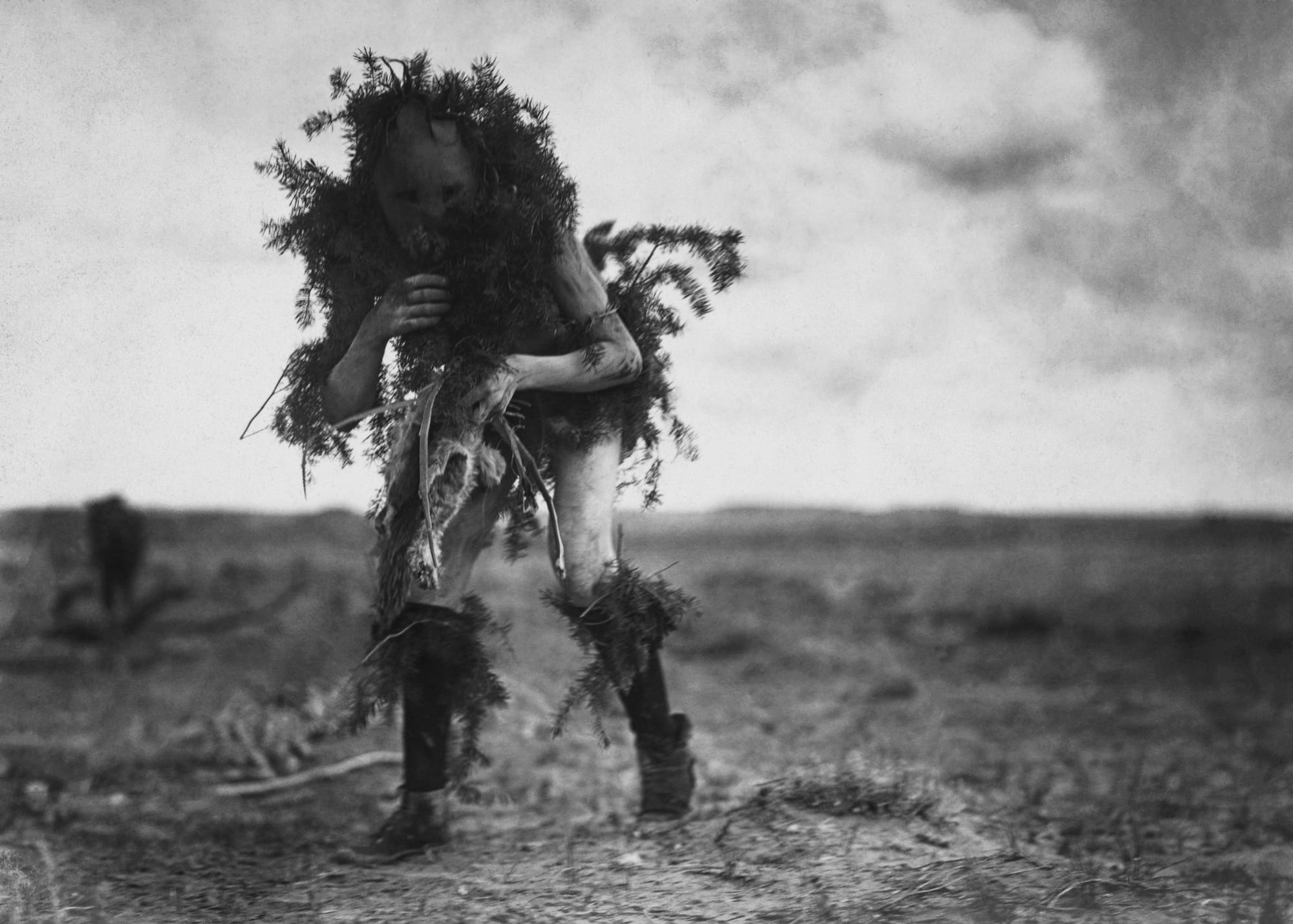
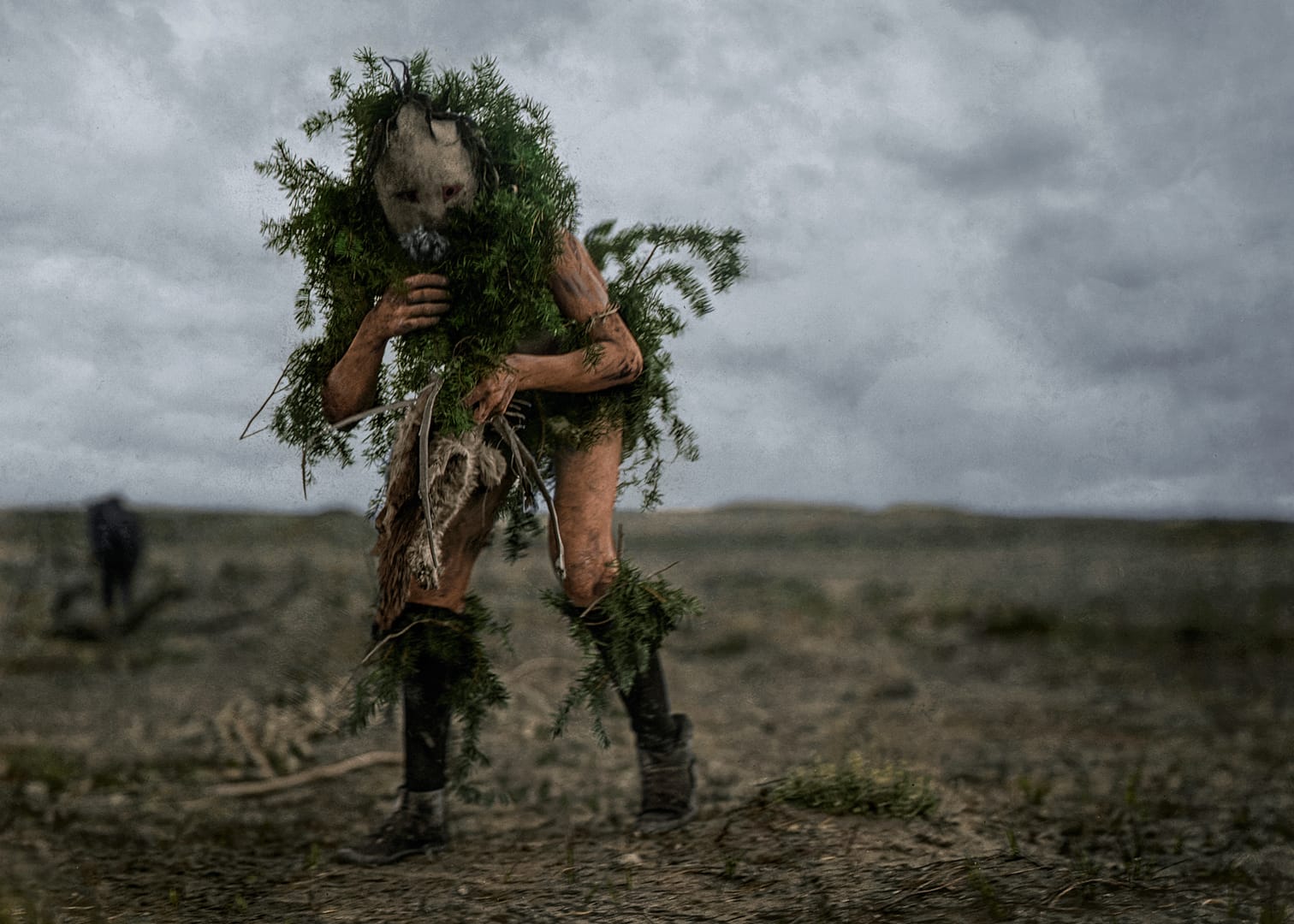
Edward Sheriff Curtis (1868–1952) was an American photographer and ethnologist. Born in Wisconsin shortly after the American Civil War, Curtis' apprenticeship in Minnesota provided him with the valuable skills that would eventually define his career. Following a move to Seattle, Curtis became a partner in an existing studio, purchasing a new camera for the large sum of USD$150 (just over USD$4000 today). Following a portrait sitting with Suquamish and Duwamish luminary Kickisomlo, Curtis embarked on numerous expeditions, eventually backed by financier J.P Morgan to produce a series on the Native American peoples. It would take over two decades to produce volumes entitled The North American Indian, with nearly 2500 original prints from Curtis' glass negatives residing with the Library of Congress.

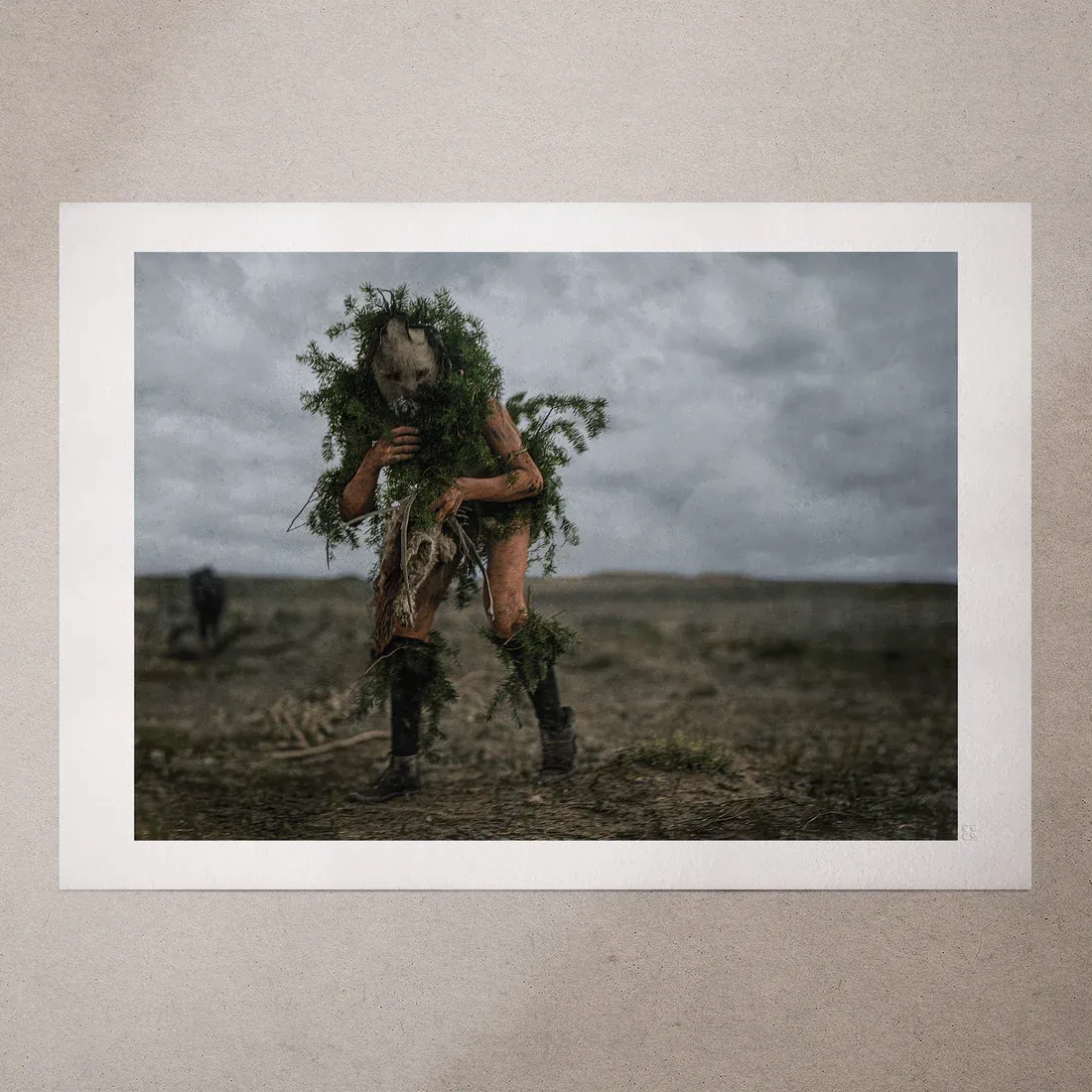
Yebichai, the Beggar, 1904, Colorized
Remaster & Colorization: Julius Backman Jääskeläinen
Archival Giclée Art Print


